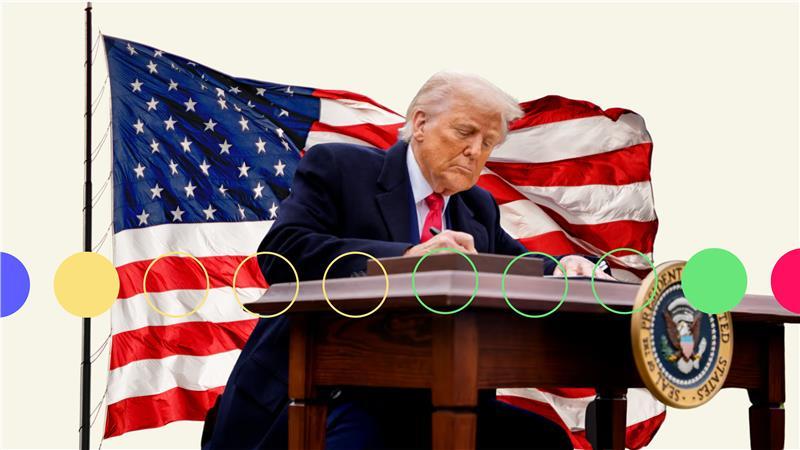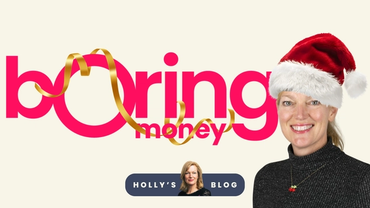Home • Articles • Trump's Tariff War: Global Economic Impact of 'Liberation Day' and Investment Strategies
Trump's Tariff War: Global Economic Impact of 'Liberation Day' and Investment Strategies
3 April, 2025
Liberation day has arrived. Each country and sector now have their starting tariffs, and the world’s leaders will now engage in diplomatic chess with the American President in an attempt to minimise the impact of tariffs on their various economies. What can we judge about the likely outcomes?

The tariff regime is at the worst end of expectations. Donald Trump has imposed a baseline tariff of 10% for all countries, with an additional tariff of 10-50% for countries that run large deficits with the US. That includes 20% for the EU, and another 34% for China, on top of the 20% already imposed. Countries such as Japan, and some of South East Asia were surprisingly hard-hit. The UK appears to have escaped with a tariff of just 10%.
There were also carve outs for specific sectors, including energy and materials that the US doesn’t have domestically, plus pharmaceuticals, semiconductors, and lumber. There were no additional tariffs for the car industry on top of those already announced.
Importantly, Donald Trump also made clear that the tariffs are subject to negotiation. They may be raised for countries that look to impose reciprocal tariffs, and lowered for countries that comply with US requests. They are a starting point rather than a final outcome. As such, judging their impact with any accuracy is difficult.
The economics of tariffs: Unintended consequences and inflation risks
Economists broadly agree that tariffs are a crude tool, and come with a range of unintended consequences for the US, and for the rest of the world. They are likely to hurt global trade and, potentially, to reignite inflation. President Trump begs to differ, famously describing tariffs as “the most beautiful word in the dictionary”.
Trump sees tariffs as a means to address trade imbalances, create a source of revenue that will allow for domestic tax cuts, and as a tool to incentivise companies to set up manufacturing operations in the US which will revive blue collar jobs and usher in a golden era for the US.
It is a long shot, but there are few willing to persuade him of a different path.
Hollands adds:
For businesses, policy makers and investors, lack of clarity means they are caught between a rock and a hard place. Policy makers will need to calibrate their responses depending on what is revealed and so ‘Liberation Day’ may prove to simply be an opening gambit in a process that will play out for some time yet as trade negotiations intensify.
Vulnerable sectors: Supply chains under pressure
The sectors in the firing line are relatively easy to predict. Anyone with long and complicated supply chains, for example, is likely to struggle most. The most obvious one is carmakers, which tend to draw parts from all over the world. US carmakers often manufacture in Canada and Mexico, which are also major markets for US auto exports. International car companies that want to import into the US face higher tariffs – 25% at the current count. That hurts all European and Japanese brands, plus UK luxury car makers such as Aston Martin or Bentley.
The tariffs also hurt areas with price sensitive products, where there are easy domestic substitutions. Drinks makers, for example, have been an early casualty. Diageo warned in February that tariffs could knock $200m off its profits. It generates around 45% of sales in the United States, its biggest market, largely from products made in Mexico and Canada, such as Don Julio tequila and Crown Royal Canadian whisky.[1]
Donald Trump also appears to have specific countries as targets. China is a perennial favourite, which now faces 54% tariffs on goods it imports into the US. However, after Trump’s first trade war, China substantially diversified its export base, which has left it a lot less vulnerable than the first time around.
For the time being, Trump appears to be prioritising goods over services. That is good news for economies such as the UK, where services are a more important part of the economy.
Impact on US companies: The double-edged sword of protectionism
Superficially, Trump appears to be supporting US business. He wants to bring domestic manufacturing back to the US, creating good blue collar jobs by ‘Making in America’. However, many US businesses will be just as damaged by the tariffs as non-US businesses. Apple, for example, still makes the majority of its iPhones in China.
The effects of US-imposed tariffs and retaliatory tariffs will likely be a menace for costs and sales volumes of many businesses.
Trump’s protectionist policies may have scope to harm US businesses – with Goldman Sachs predicting that every 5% increase in US tariff rates having the potential to reduce S&P 500 earnings per share by 2-3%.
There are domestic companies that could benefit if Trump lowers taxes or cuts regulation, but that doesn’t appear to be his priority for the time being.
This has been reflected in stock markets, where there has been a rapid reallocation away from the US.
An incredible $2.3 trillion was wiped off the combined value of the Magnificent Seven group of mega cap US tech stocks in the first quarter of 2025. Investors who bought any of the seven stocks at the start of January and held them until the end of March would have lost money. Alphabet, Amazon, Apple, Meta, Microsoft, Nvidia and Tesla were the darlings of the stock market for a long time, but now they’ve fallen from their perch.
In contrast, Jason Holland, points out that many indices representing regions outside of the US have delivered healthy returns for investors in Q1, including China, Europe ex-UK and unloved UK equities.
We have become used to US equities consistently trouncing other regions in recent years, so in this quarter at least, the benefits of global diversification have reasserted themselves.
Recession risks and economic forecasts: Goldman Sachs' warning
The economic consequences of a trade war are far-reaching in the US and elsewhere. A recent estimate from Aston Business School suggests that the cost of a tariff war could reach $1.4 trillion.[2] Goldman Sachs also warned that it now sees a 35% chance of a recession in the US in the next 12 months, up from 20% previously. It cut its 2025 GDP forecast to just 1% and bumped up its year-end unemployment rate outlook.[3]
Similarly, gloomy predictions are being made across the world. Ahead of the Chancellor’s recent Spring Statement, the OBR warned that Trump’s tariffs risked knocking out all her fiscal headroom – through, crucially, only if they persisted for five years or more. The fact that Trump has limited UK tariffs to 10% will be welcome.
If companies choose to pass on the cost of tariffs, it could raise costs for US consumers, and that will be reflected in higher inflation. This will give the Federal Reserve pause for thought on further interest rate cuts. It’s tempting to think of that as a US problem. However, the rest of the world is influenced by US monetary policy, so it’s impact may be broader.
Investment strategies in a trade war: Safe havens and opportunities
It is near-impossible to invest based on the imposition of tariffs or otherwise. The final level of tariffs is still unclear, and even then, it is difficult to judge the impact on demand. Is someone buying an Aston Martin particularly sensitive to its price? Equally, there are companies where the share price has already moved in anticipation of tariffs, and this needs to be taken into account.
That said, it is likely that markets will be volatile in the near term until the ultimate outcomes of the tariff regime are clearer. Investors appear to be hunkering down in safer haven assets, such as equity income funds, where some of the initial investment is repaid as a dividend, or areas such as infrastructure, where demand is more predictable.
Gold has been the star performer as investors have looked for a safe haven. Hollands says gold delivered 15.3% gains over the first quarter of 2025.
It has once again fulfilled its role as the asset class investors flock to in times of uncertainty. A little gold in a portfolio can act as a kind of insurance policy that kicks in during times of uncertainty.





